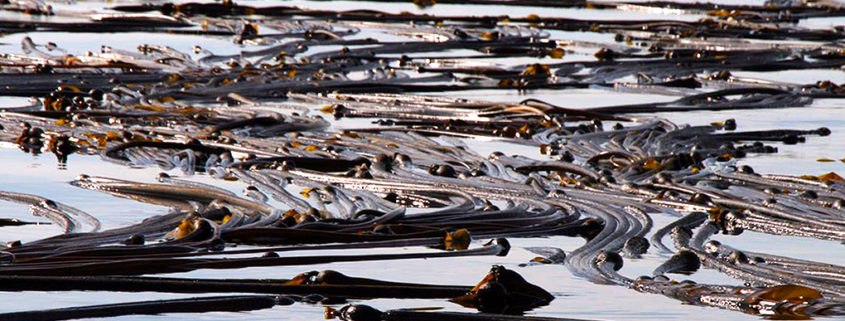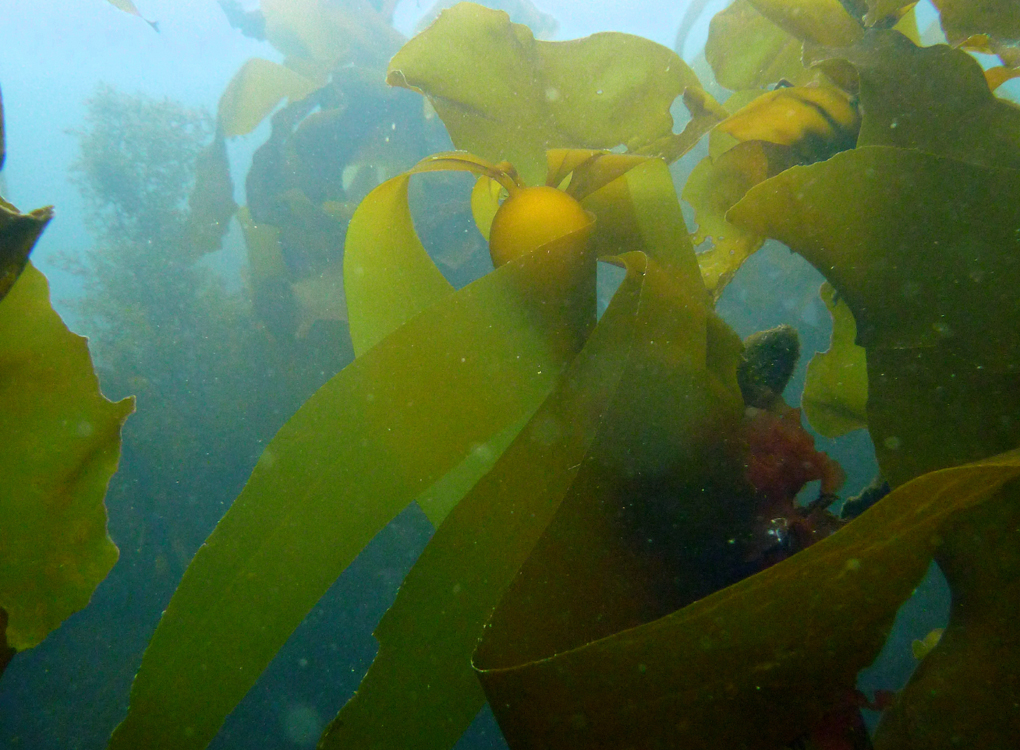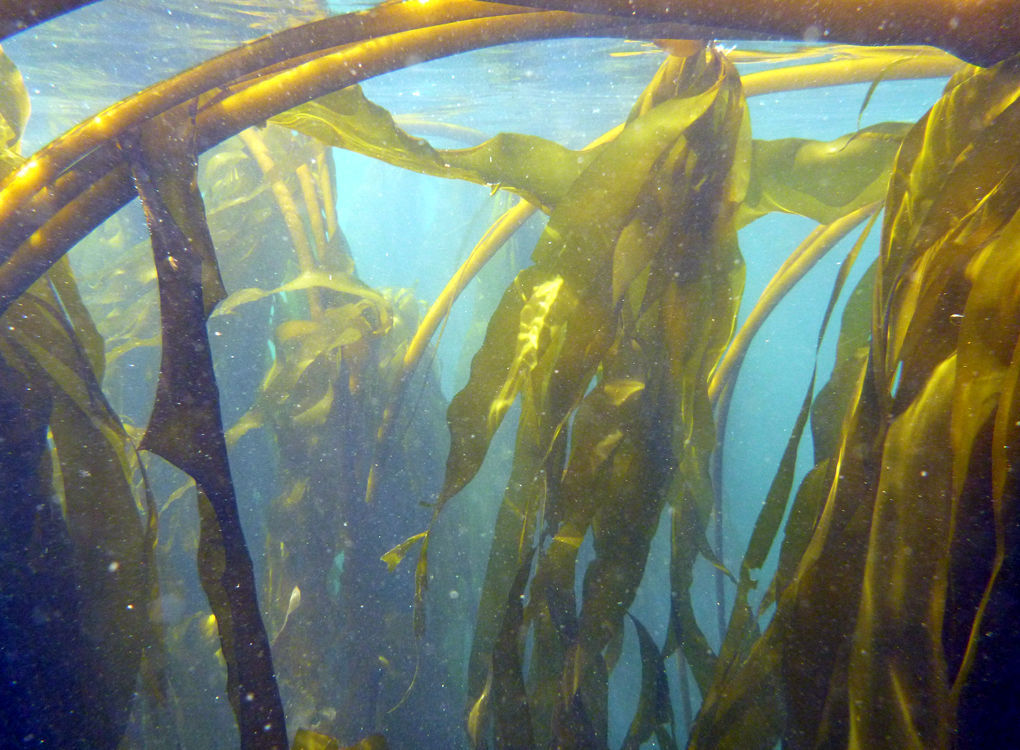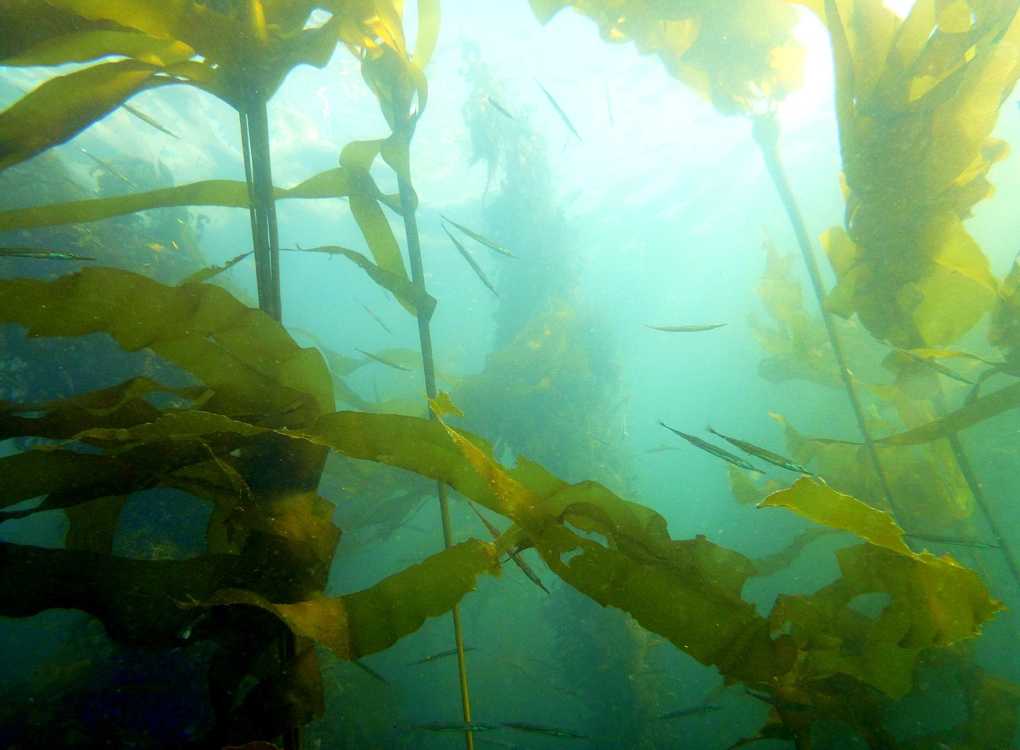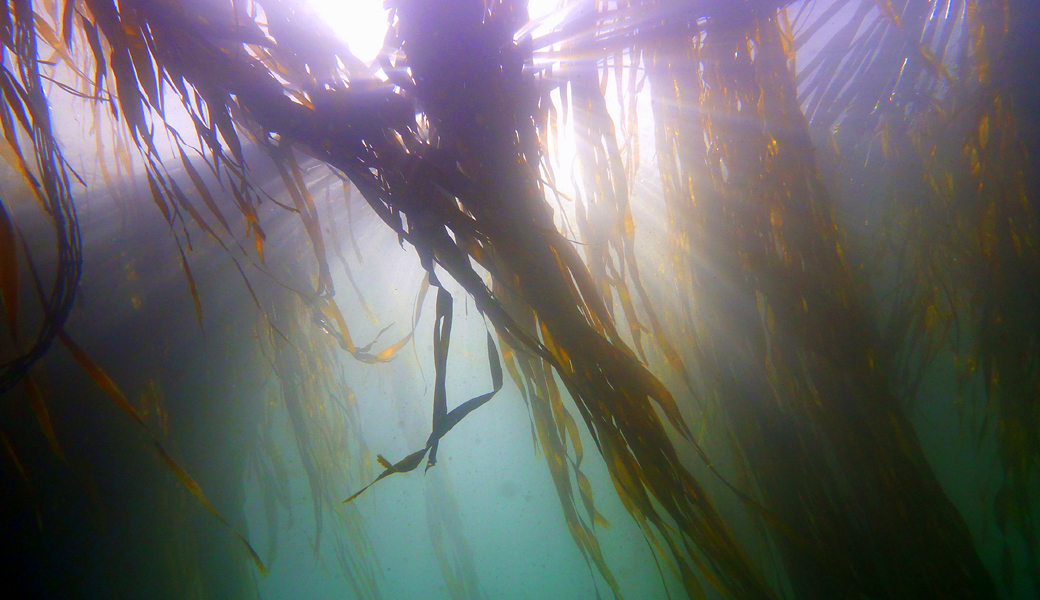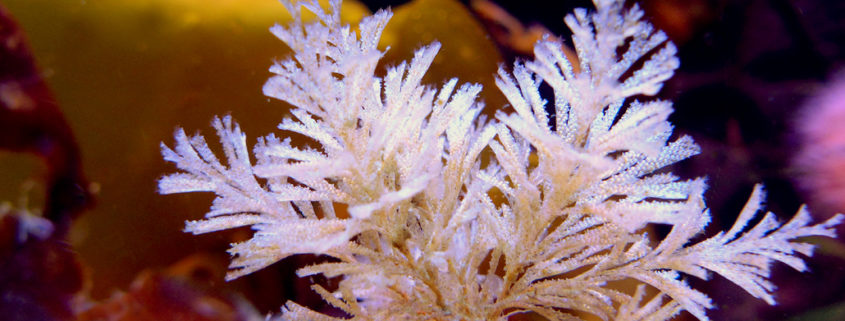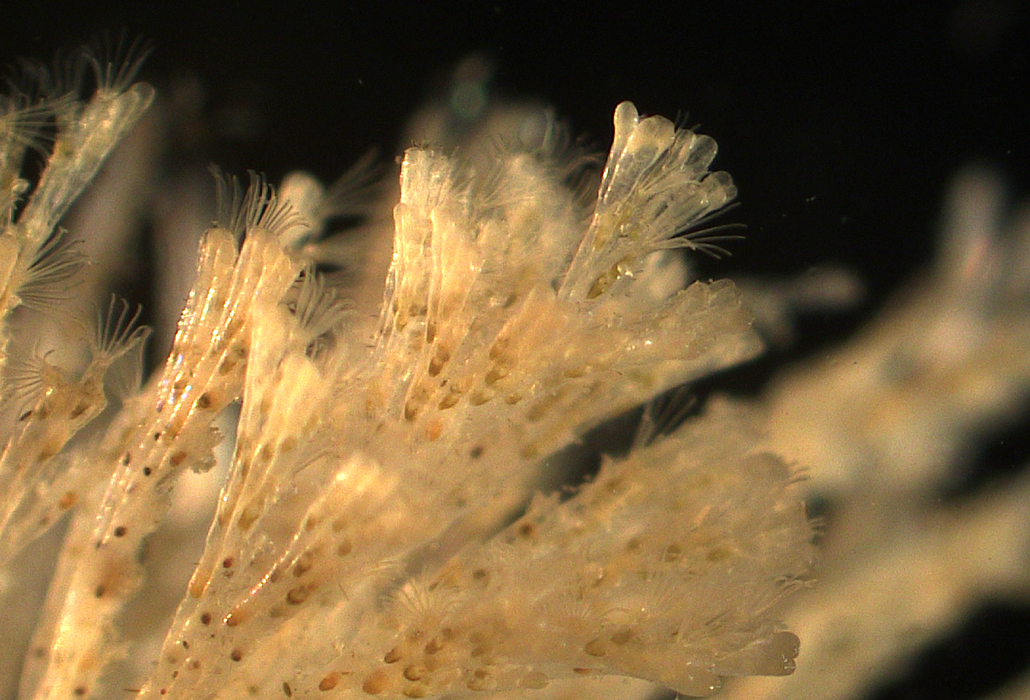Giant Bull Kelp Scientific name: Nereocystis leutkeana Author: Antonia Kropp Life History/ Interesting Facts: Bull Kelp is a major species of kelp and the largest brown algae. It is a fast growing seaweed that can grow up to 2ft in one day and reaches a total size up to 36m (118ft). Bull Kelp is a vital component of the coastal ecosystem and comparable to a forest on land. It is food and habit for many animals and other seaweeds. It has a large bulb filled with carbon monoxide gas at the end of a long, robust and flexible tail (called stipe), that keeps the kelp floating on the surface to get the sunlight it needs for photosynthesis. Most of the kelp dies in winter because of the stormy and rough weather and washes up on beaches where it serves as food and shelter for the animals on sandy shorelines. Habitat: Bull Kelp grows in kelp forests along the rocky coastline and in intertidal zone but not far off the coast it may be found in waters up to 20m (65ft) deep. It is common from northern Alaska to southern California (in colder water). As a result of its location near the coastline it can warn boaters of shallow reefs or the coast.
Posts
Spiral Bryozoan Authors: Eden Murray and Claire Troost Scientific Name: Bugula californica Other Common Names: Stiff Stalk Bryozoan, California Moss Animal, Pacific Branching Bryozo Bugula californica can grow up to 7.5 cm tall and ranges from BC to Hawaii and the Galapagos Islands. It lives in subtidal zones as deep as 400m. It is commonly attached to hard surfaces, including docks and rocks. Each colony of the bryozoan is shaped similar to an evergreen tree, and is coloured light brown. It reproduces sexually, and after fertilization will form a planktonic larvae that settles in the subtidal zone. It grows through budding or cloning, to grow in a spiral pattern off the main axis. It is a main food source of the Clown Nudibranch (Triopha catalinae), and other nudibranchs including the Frosted Nudibranch (Dirona albolineata) and the White and Orange-tipped Nudibranch (Janolus fuscus). The bottom of the stalks are mostly darker, dead zooids (an individual of the bryozoan colony). A specialized zooid called Avicularium that looks similar to a bird-head keeps other organisms from resting on and growing on the bryozoan. They will also catch small crustaceans and bring it to the mouth of the zooids to feed it.
Interesting resources for research and photographer credit
Latest Projects
VicHigh Marine
Victoria High School
1260 Grant St.
Victoria. BC, Canada
V8T 1C2
Phone: 250-388-5456
Email: dsyoung@sd61.bc.ca


